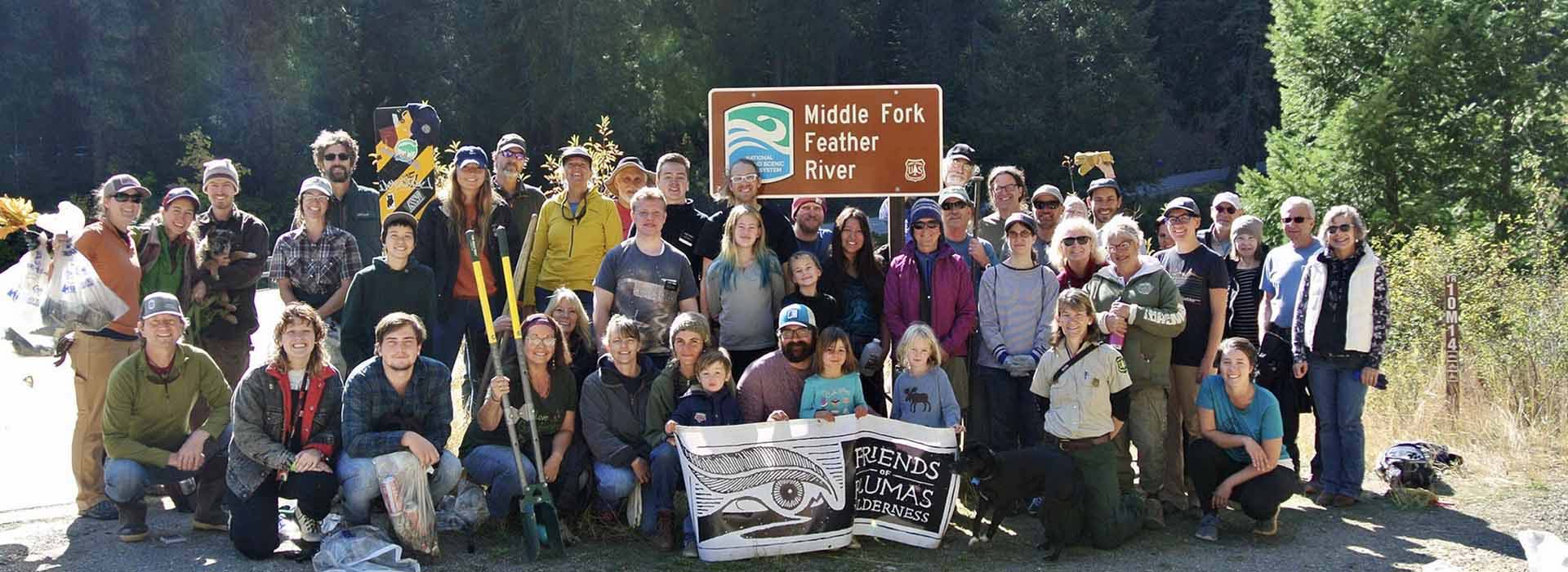
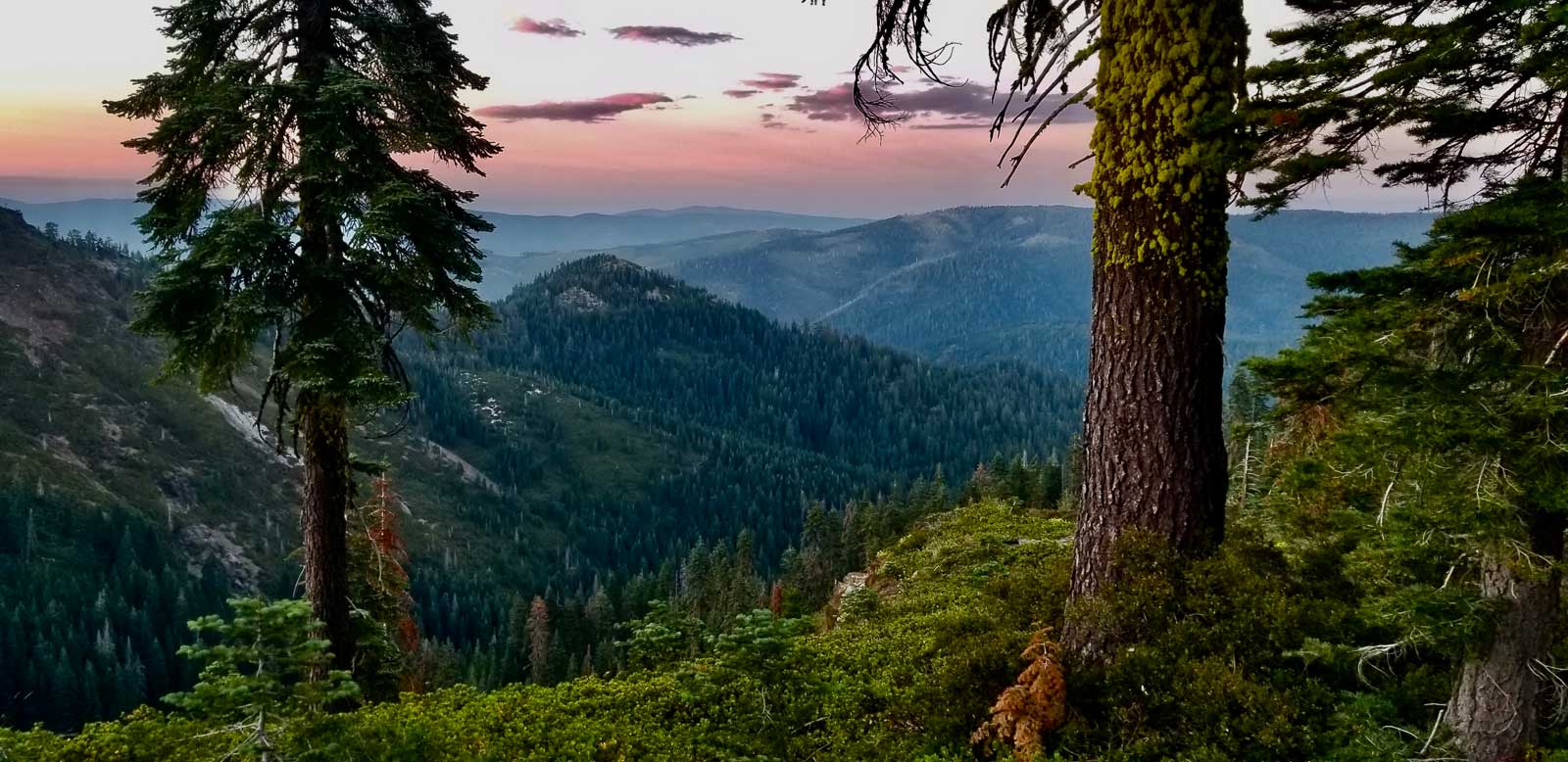

CONNECT WITH US
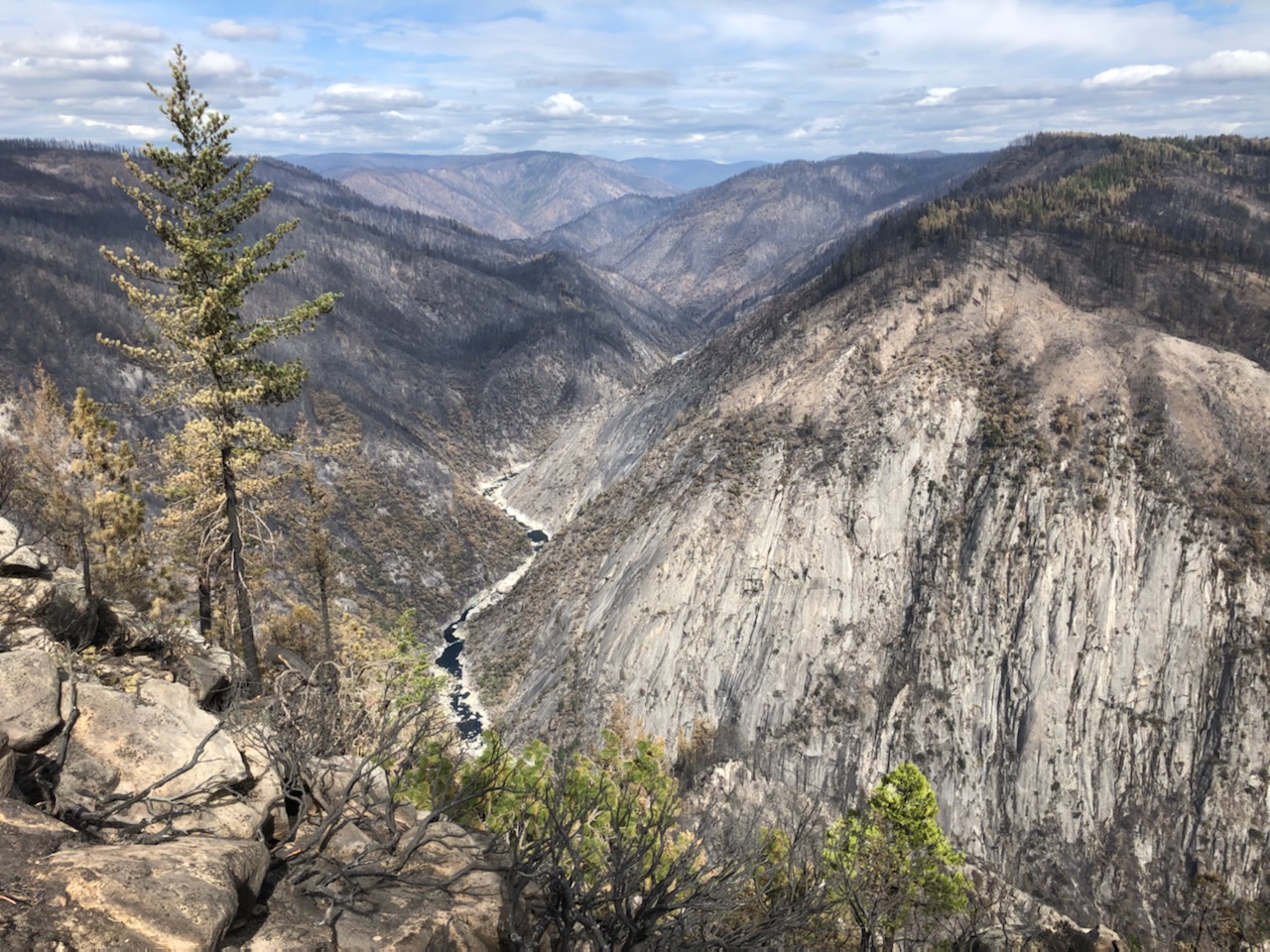
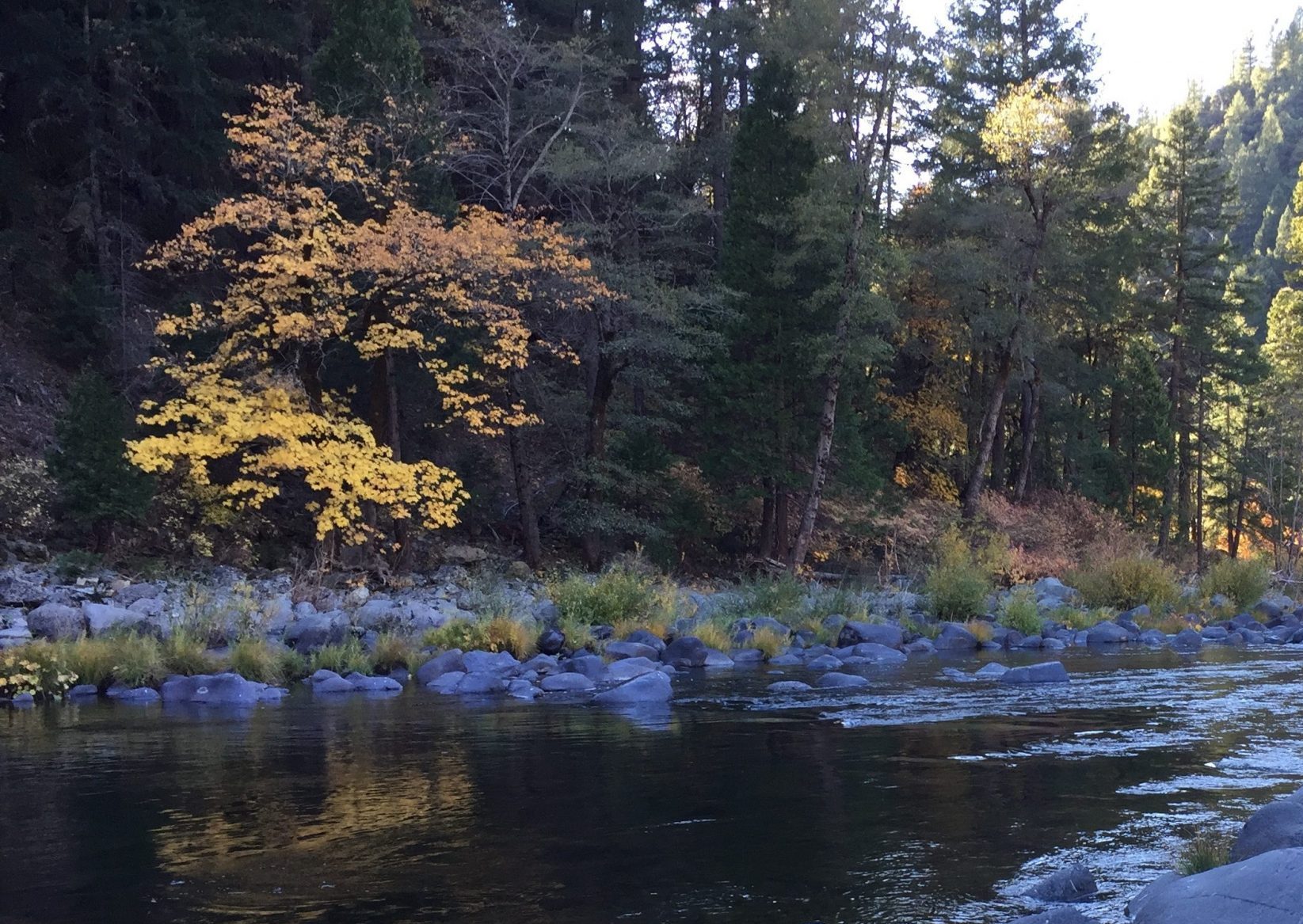
Local Wildlands Need Our Love Now
Since my last letter, my mother passed away. Carmen Anna Jury gave much more than she took. One of the many gifts she gave me is an unending love of nature. This love was nurtured and passed down generation after generation. Her father, Earl Reeves, who was born in 1900, moved to California with my grandmother in the 1920s, and worked in mills throughout Northern California most of his life. He shared his love of forests with my mom and me. This love is the foundation of my understanding and appreciation of nature.
I developed a deeper love and understanding of Sierra forests since returning to Northern California in 2004, after a decade and a half in Colorado. My understanding of nature has been enriched through thinning forests and restoring fire with Mountain Maidu – The Cunninghams from Genesee Valley, and the Greenville Indian Rancheria Wildland Fire Crew.
What is obvious to me is that the health of our communities, surrounding working lands, and wildlands beyond are intricately interrelated. Our forests are much more than one of the economic pillars of our communities – they enhance all aspects of our lives. Our forests make us who we are. Healthy forests improve our mental and physical well being in ways the Mountain Maidu know and science is just beginning to understand.
It has been gut-wrenching to watch forests I’ve known since I was a child consumed by fire, as it has been heartbreaking to see communities I have personal connections with go up in smoke and friends lose homes and businesses. Because we are so intricately intertwined, we are all in this together.
Our Sierra forests are dying at an alarming rate. Having recently lost my mother, I cannot help but think Mother Earth is dying. Even on her deathbed, during my last visit when I could no longer hold back the tears, my mother gave one final piece of advice: she said, “smile!”
As we are surrounded by death following the fires that have consumed vast tracts of our forests and our communities we must not forget to smile when we see life and love and the hope they bring. And, we must remember to give back. Our communities, working lands, and wildlands need us now more than ever.
We at Friends of Plumas Wilderness strongly believe the Upper Feather River watershed is at a critical crossroads. In the last five years, 57% of the upper watershed has burned. The loss of life, livelihoods, homes, and habitats due to wildfires has been heartbreaking. Our communities, working lands, and wildlands have been forever altered in short order. Our remaining wild places are threatened now more than any time in my tenure here.
My wife, Darla DeRuiter, who has served as Secretary of Friends of Plumas Wilderness since 2015, has been hired as our first Executive Director. Under her leadership, Friends of Plumas Wilderness and Lost Sierra Food Project have teamed up to host Conny Rios Escobar as a GrizzlyCorps Fellow. More details about our team and how you can join us at this crucial time are included in this edition of the Equinox.
To meet the challenges and opportunities of our times, Friends of Plumas Wilderness aims to grow. After nearly 50 years as an all-volunteer, non-membership organization we have hired staff and will begin recruiting members. If you support our mission to study, explore, and maintain the integrity of natural ecosystems where the Sierra and Cascades meet, become a Friend of Plumas Wilderness. We need you now!
Leave it wild!
Darrel Jury
COMMUNITY, WORKING LANDS, WILDLANDS – AND FIRE
Our communities have suffered greatly in recent years due to wildfire. The Dixie Fire has affected everyone in ways that hurt deeply, and our hearts go out to all for healing and dealing with your particular situation. The fabric of our social, economic, and ecological systems has been altered enormously by the fires that have ripped through our watershed.
Darrel and I took Conny, our new GrizzlyCorps fellow, on our first ‘Field Trip Friday’ outing to see how the Dixie Fire burned from the Greenville Wye north through Indian Creek and east through Genesee Valley. This driving and walking tour revealed a mix of fire effects and made it clear that forests that have been tended regularly have a better chance of withstanding wildfire. Portions of the Feather River Land Trust’s Heart K Ranch that had been thinned and underburned previously, for example, burned at low intensity, clearing out the ground fuels as the Dixie blazed through. It was a model of a healthy forest with widely spaced trees of diverse ages and species.
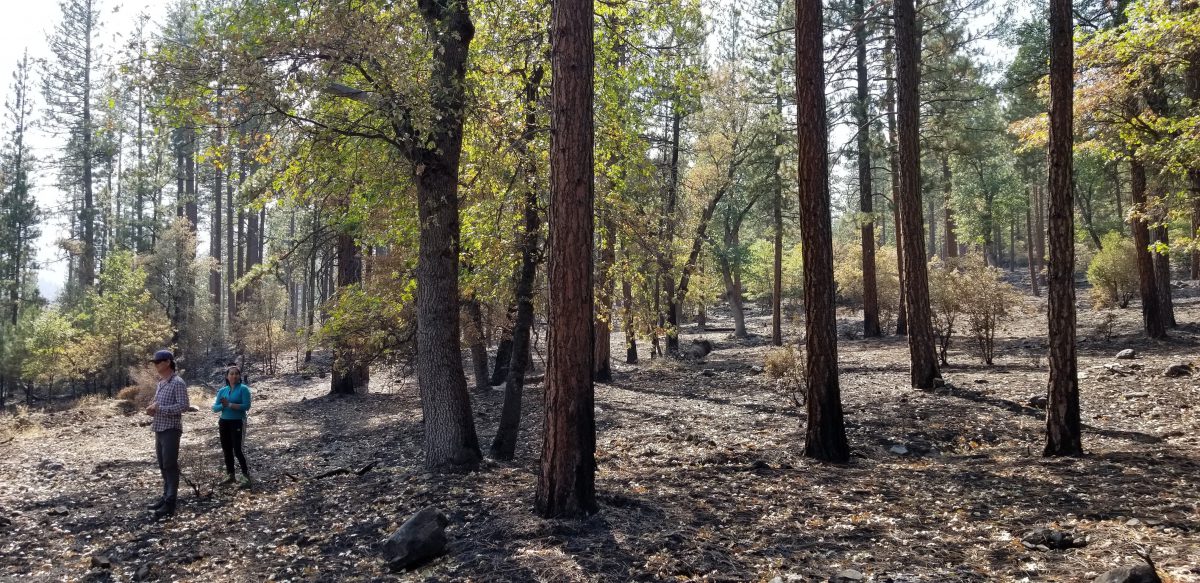
There are many factors that affect what burns, of course – the winds at the moment, slope and topography, and much more. But much of our landscape is crowded with trees that grew back following the peak of the logging boom in the 1950s-1980s that cherry picked the biggest trees. Plantations of ‘pines in lines’ were replanted and rarely returned to, and shade-tolerant conifers filled in the gaps. Put these logging practices together with 100 years of fire suppression, climate change, and drought, and our forests are a recipe for megafires.
Early estimates for the Dixie Fire suggest that a third of its footprint burned at high intensity, which could lead to forest type conversion, where chaparral or grasses replace conifers, for example. It seems clear we need to take a new approach to our relationship with the land around us.
Large trees are resilient to wildfire. Areas that haven’t been logged, like inventoried roadless areas, should be left alone and treatment should be focused elsewhere. Developing fire resilience around our communities – the Wildland Urban Interface – and treating areas adjacent to the 3,000 miles of existing roads, seems logical.
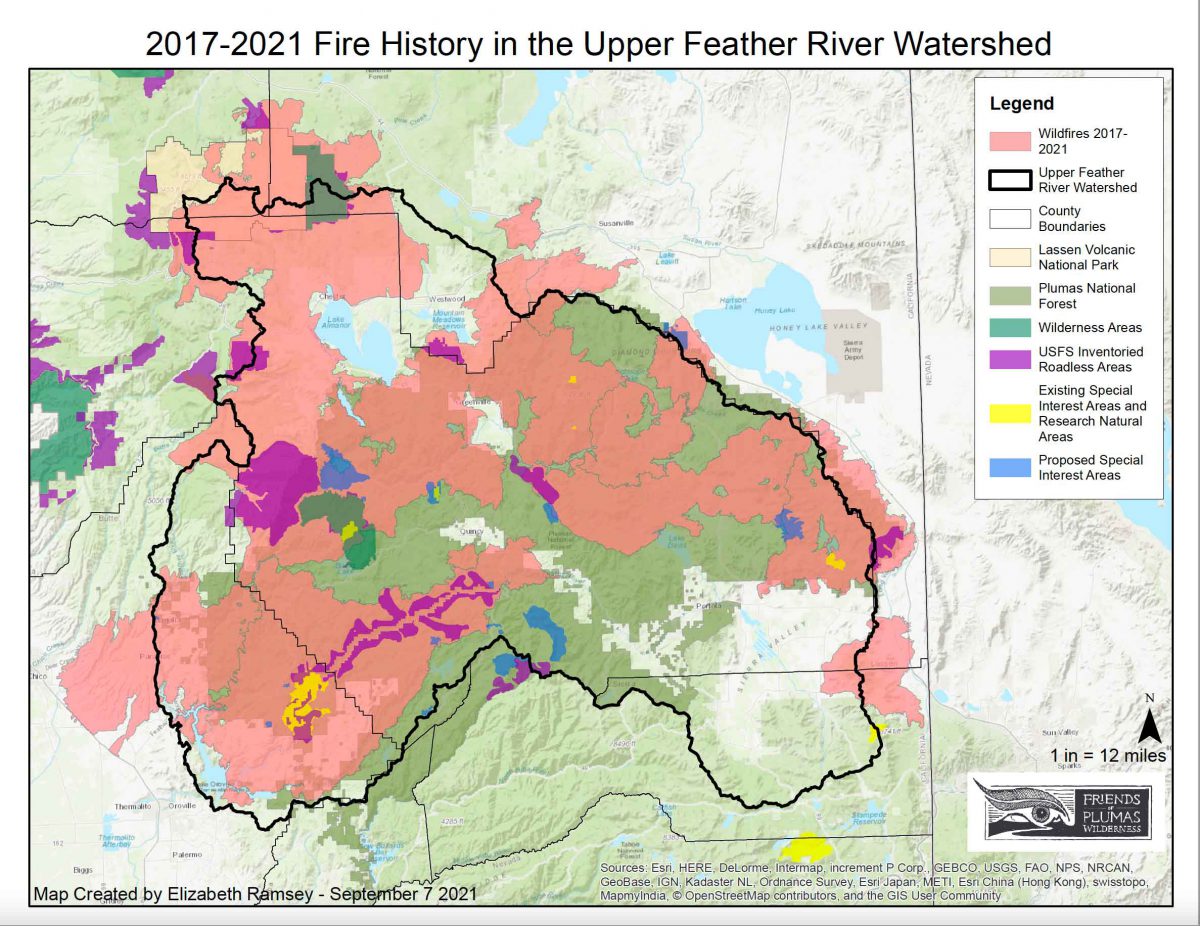
Let’s set a new course that works for a new climate regime in the future. It is expected to be 7 to 9 degrees F warmer in our area by the end of the century. Is that within your children’s or grandchildren’s lifetimes? What will life be like for them? Friends of Plumas Wilderness is working closely with a state-wide steering committee on the 30×30 initiative, a global, national, and state-wide project to conserve 30% of Earth’s lands and waters for nature by 2030 to save life on the planet. We are heading up a locally led, nationally scaled effort to conserve, connect, and restore the lands, waters, and wildlife upon which we all depend. To learn more, check out the letter to the California Department of Natural Resources we just collaborated on.
Those of us living in the Upper Feather River watershed have experienced dramatic changes to our forests due to wildfires in the last few years. These drastic environmental changes will have long-lasting social and economic repercussions. Rather than think we can control fire, like the Forest Service believed for the last hundred years, we need to tend the land with fire. As the headwaters of the State Water Project that delivers water to more than 25 million Californians hundreds of miles away, our region deserves tender loving care. Join us to give back to this place we all love so much!
Local, resilient, wild,
Darla DeRuiter
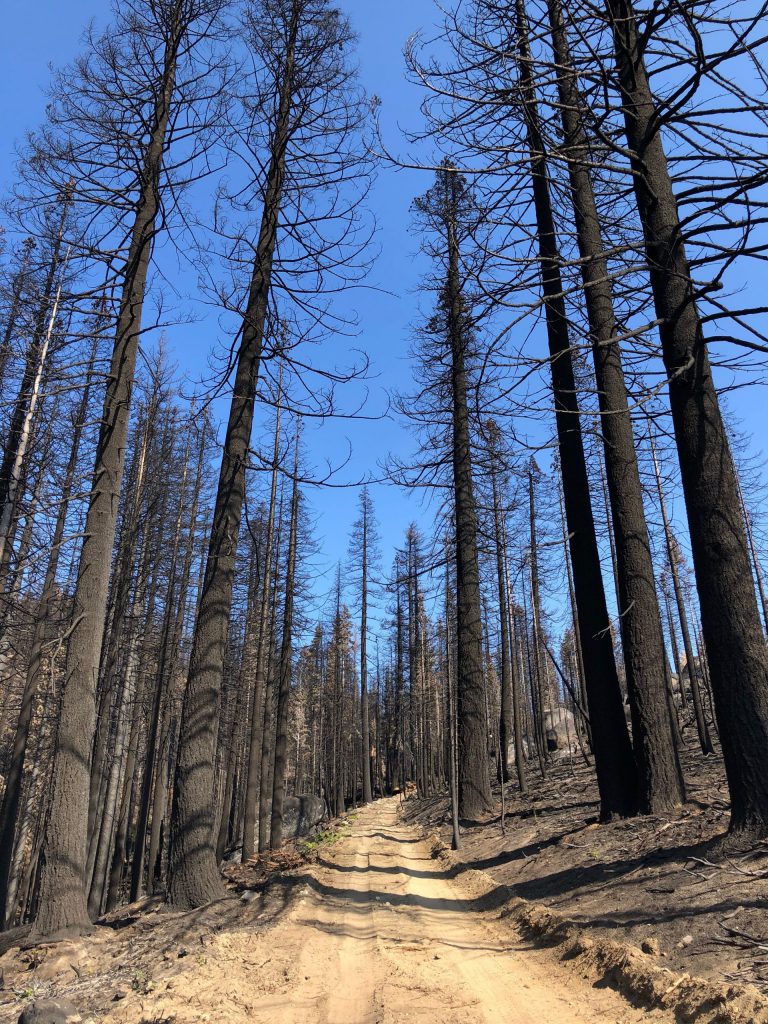
Efforts to control recent mega-fires have compromised the character and integrity of the 23,000 acre Bucks Lake Wilderness. Last year, over 250 trees were felled by chainsaw within the Wilderness, when 3.5 miles of contingency fire line and two helicopter pads were constructed along the Mill Creek Trail, even though the North Complex remained seven miles f
rom the Wilderness boundary. This year, 11 miles of dozer line and nearly 9 miles of hand line were constructed within the Bucks Lake Wilderness. Fire suppression efforts within the Wilderness also included the use of helicopters to drop aerial incendiary devices and planes to drop retardant.
Darrel Jury shared our dismay over the heavy-handed use of machinery in the Bucks Lake Wilderness with Forest Supervisor Chris Carlton and worked closely with the Dixie Fire East Zone Lead Resource Advisor Jason Williams, who wrote the Bucks Lake Wilderness Fire Suppression Repair Plan. Jury conveyed the importance of restoring all areas within the Wilderness, not only areas that receive high use, like the PCT. Implementation of the plan began on September 13, 2021.
Nearly 5.5 miles of dozer line were constructed east of Chuck’s Rock paralleling Lavassi Creek and tieing into the PCT just west of Granite Gap. According to Forest Service officials, the dozer line along Lavassi Creek did not hold but a parallel hand line did. Over five and a half miles of contingency dozer line were constructed along the Pacific Crest Trail towards Bucks Summit. The fire did not come into contact with the PCT south of the intersection with the Granite Gap Trail.
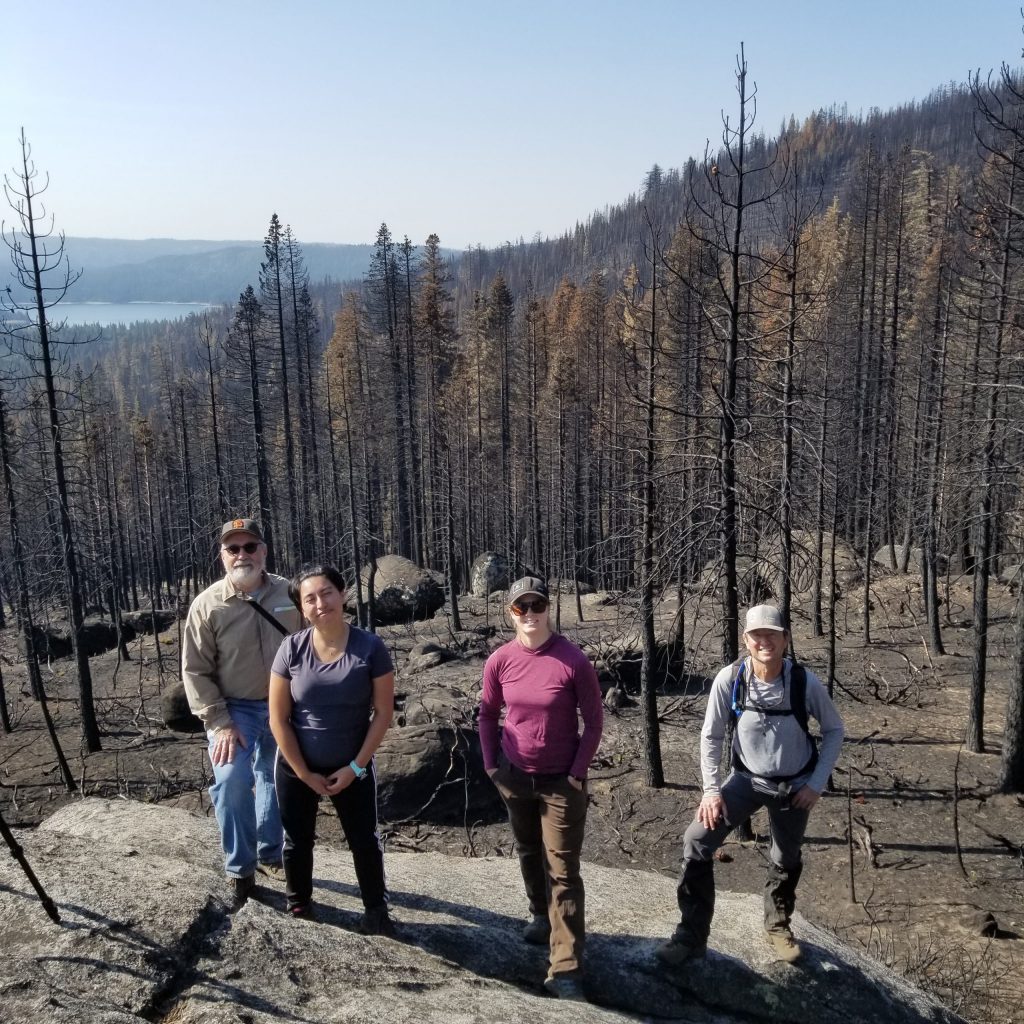
On September 21, Darla DeRuiter, Conny Escobar Rios, Darrel Jury, Ron Logan, and Trinity Stirling visited the western portion of the Bucks Lake Wilderness east of Chuck’s Rock and north of the Mill Creek Trailhead. Goals of the site visit were to assess fire effects and fire suppression impacts and establish 360 degree photo points to monitor the revegetation of the area.
Our initial visit allowed us to gain an understanding of fire severity and fire suppression impacts prior to implementation of the Repair Plan. Much work needs to be done and FoPW will continue to work with the Plumas National Forest to guide fire suppression repair efforts and long-term projects to sign the Wilderness and prevent motorized trespass, monitor noxious weeds brought into the Wilderness by equipment, and restore the natural role of fire.
Administrative use of machines in the Wilderness is permitted by the Wilderness Act but is strongly discouraged. By working with the Forest Service to restore frequent, low-intensity fire within the Wilderness we hope to improve forest health, protect adjacent communities, and avoid the unnecessary use of equipment within Wilderness – as the use of machines and the spread of non-native species within Wilderness can have much longer lasting impacts than wildfire.

With winter on our minds, we wanted to provide an update on Winter Travel Planning – Throughout May 2021 the Plumas National Forest convened five workshops centered around Over-Snow Vehicle (OSV) Use Designation. After spending six years advocating for the protection of snow sanctuaries, the few places on our public lands where people and wildlife can experience the wild and quiet of winter, Darrel Jury was committed to attending all 17 hours of workshop video conferences. On June 3, 2021, Darla DeRuiter represented Friends of Plumas Wilderness at the OSV Resolution Meeting and emphasized that the Silver Lake Road is used primarily by human-powered winter visitors and should be designated for that use. Local ski enthusiasts Rob Russell and Jim Battagin also spoke up for local winter wildlands. The outcome of the workshops and Resolution Meeting have yet to be seen, as the Forest Service has not released the Final Record of Decision. Will it take another year for the Forest Service to make a decision? Stay tuned!
If you want to dive deep in the snowbank of Over-Snow Vehicle planning on the Plumas National Forest watch the Winter Wildlands Alliance Grassroots Advocacy Conference session on “The New Era of Winter Travel Management”. FOPW President Darrel Jury participated in the August 24 panel along with Forest Service Region 5 Deputy Regional Director Jodi Holzworth, Plumas National Forest Supervisor Chris Carlton, Winter Wildlands Alliance Policy Director Hilary Eisen, and WWA Advocacy Director David Page.
On September 9, 2020 the Bear Fire / North Complex exploded and burned 181,637 acres in a 24-hour period. Everything changed in a day. The communities of Berry Creek, Brush Creek and Feather Falls burned at high severity along with the lower Wild & Scenic River, Feather Falls Scenic Area, Bald Rock Inventoried Roadless Area, and Feather Falls National Recreation Trail. In early 2021, the Plumas National Forest initiated the Feather Falls Post-Fire Project. FoPW submitted comments in response to the proposed salvage logging project and trail restoration effort on March 24, 2021. We support salvage logging outside of the Inventoried Roadless Area and recommend that the Feather Falls Campground be relocated away from the trailhead. On May 13, 2021 Darla DeRuiter and Darrel Jury attended a Feather Falls site visit and on May 17, FoPW submitted detailed recommendations in partnership with CalWild. The salvage logging timber contract in the vicinity of the trailhead sold recently but clearing the National Recreation Trail and restoring the Feather Falls observation deck will be more costly and funding will depend upon grants. We have let potential champions for the project know we will assist however we can.

Friends of Plumas Wilderness, Winter Wildlands Alliance, and Plumas National Forest partnered to purchase and install signage for the Bucks Lake Wilderness. Prior to the Dixie Fire, signs were installed at Silver Lake and Belden. The signs at Belden survived the fire! The remainder of signs will be located where dozer lines into the Wilderness may encourage vehicular trespass. If you would like to help fund or install additional signs in the Bucks Lake Wilderness please contact Darrel.
The new Belden Wilderness/PCT signs survived the Dixie Fire!

Friends of Plumas Wilderness, Adventure Scientists, and Plumas National Forest are collaborating to collect water quality samples along the Wild & Scenic Middle Fork Feather River. This summer, FoPW Volunteers Darla DeRuiter, Darrel Jury, Warren Simison, Piers and Faith Strailey collected samples at five locations along the Wild & Scenic River. Surprisingly little is known regarding the quality of water in our region, given 27 million Californians get their drinking water from the Upper Feather River watershed, the headwaters of the State Water Project. Mercury is a major concern as it was used for mining gold in our region and methylmercury and other toxic chemicals found within our watershed can cause serious health problems. Mercury accumulates as it moves up the feeding chain and can become a neurotoxin.
For many years, a health advisory has been issued for consuming fish taken from the Upper Feather River watershed. FoPW aims to learn more about the quality of water along our one Wild & Scenic River and track trends over time. If you would like to join our Adventure Scientists team next year, contact Darrel.

Up to this point the Bear Fire photo project has largely relied on volunteer excursions to the fire area to document conditions. Due to packed work schedules, unhealthy air quality, and forest closures FoPW did not capture all desired locations during the summer of 2021; therefore, we have embarked on a partnership with Austin Hagwood on this project. Austin was born in Quincy, CA where he developed a love for the mountains and streams surrounding his home. He received his BA in English from the University of Notre Dame and an MPhil in anthropology from Cambridge, where his fieldwork in Papua New Guinea focused on the tropical timber industry. As a Fulbright Scholar and National Geographic grantee, he partnered with scientists in Papua New Guinea to make botanical collections housed in the Royal Botanic Gardens of England and Scotland. He is currently an MFA student at the University of Montana and has spent the last five fire seasons working as a lookout for the Forest Service in the northern Rockies. Board member Trinity Stirling has known Austin her entire life and looks forward to working with him on this project. Austin describes his interest in the Bear Fire project this way:
“I was drawn to the Bear Fire Photo Project because the Middle Fork remains an artery of life for our ecosystems as well as a river flowing through my memory. It’s one of North America’s most spectacular waters, and I grew up backpacking down to its sand bars to discover the joy of rainbow trout in emerald pools. It’s also a canyon undergoing colossal environmental and cultural change following seasons of drought and fire; documenting this shift through the Bear Fire Photo Project will help us understand a new and fragile future for the Middle Fork as we strive to maintain its wild character.”


Did you know that pollen deposited in shallow lakes contains a chronology of past vegetation types and charcoal ash that settles to the lake bottom can show us fire histories? On July 15, Sacramento State University Geography professor Jim Wanket, along with his student Will Barcus, led a cadre of volunteers, including FoPW folx, to the Fowler Lake proposed Special Interest Area. We used an inflatable raft to collect five sediment cores from the shallow lake. Professor Wanket, a long-time friend of FRC English Professor and FoPW Board Member Will Lombardi, is working with colleagues in the social sciences to triangulate data collected from the sediment cores with Traditional Ecological Knowledge and historical records to gain a more comprehensive understanding of past vegetation types and fire frequency. Understanding how forests and fire have interacted in the deep past is critical as we enter an era of increasing fires and conversion of vegetation types.
Dr. Wanket reports that his samples represent an estimated 800 years of the Fowler Lake region’s natural history. They suggest a pattern of regular fire prior to the era of suppression, then fires drop off dramatically starting around 1900. Contemporary thinking attributes the steady undercurrent of fire activity in the past to indigenous management consistent with findings throughout the West, while the striking drop-off is directly attributable to modern fire management practices. Further, Wanket’s findings show that organic indicators among the samples match patterns of climate change in our region, affirming a rapid warming since the 19th Century, characterized by warmer temperatures and shorter periods of seasonal ice, and thus increased periods of vegetative growth.
This important research has been generously funded through Sacramento State’s College of Natural Sciences and Mathematics Summer Undergraduate Research Experience Program. This is a donor-funded program that can act as a foundation for future management decisions in our watershed. Your support of FoPW makes these kinds of research partnerships possible!

FoPW teamed up with Lost Sierra Food Project to host a GrizzlyCorps fellow that will be working with two organizations, and we are thrilled to welcome Conny Rios Escobar to our team! Conny started with FoPW in September and will focus her efforts with us through mid-February, when she will switch over to Lost Sierra Food Project (LSFP) for the remainder of her 11-month fellowship through the end of July, 2022.
Conny Rios Escobar is from Los Angeles, CA. The daughter of immigrants from Southern Chiapas, she grew up with her rich culture, from food like tamales Chiapanecos to music played on the marimba. She moved away from her hometown and family to earn her B.A. in Molecular and Cell Biology—Developmental Genetics from UC Berkeley in August 2020. During her undergraduate career, she worked as a Research Assistant in the UC Berkeley Agroecology Lab where she learned about soil health and on-farm diversification practices. In 2019, she participated in the Oakland based program, the Outdoor Educators Institute, where she developed leadership skills for supporting youth engagement in the outdoors. Her involvement in this program and her work in the agroecology lab fueled her passion for working towards food justice and equitable access to the outdoors. Most recently her interests took her to Southeast Alaska where she was a student in the Glacier Bay Year 2021, participating in an immersive educational program based on the pillars of academics, labor, and self-governance. Her love for this program has endured and she now serves on the Tidelines Board of Directors, where she plans to advocate for student needs and more equitable programming. She enjoys going on multi-day camping trips where she can take several naps and finish entire novels.
During Conny’s time with FoPW, she will be assisting with the Fire Footprint series, 30 by 30 efforts, equitable outreach and communications, and more! We are thrilled to have her on our small but mighty team.
GrizzlyCorps is a program under AmeriCorps, which sends American adults across the country to provide communities with public service and gain multiple, varied experiences. Specifically, GrizzlyCorps, which is part of UC Berkeley’s Project Climate, focuses on regenerative agri-food systems and fire and forest resilience – the perfect combination for LSFP and FoPW. Please reach out to Conny at connyriosescobar@gmail.com with questions, comments, or to simply welcome her to our wonderful community!
The impetus for the Fire Footprint Series came about in the heart of winter, following the ravages of the Bear Fire / North Complex, when so many of us were newly awakened to the lasting environmental and personal effects of catastrophic megafire in our watershed. FoPW President Darrel Jury called a stakeholders meeting among likely partners to discuss practical and immediate material and emotional responses to the loss we all felt. The Fire Footprint Series, a vision for an interactive blending of natural sciences, fine arts and humanities, and hands-on maintenance and restoration work, was the result. FoPW then coordinated with the U.S. Forest Service, members of the Maidu community, artists and science writers, Sierra Buttes Trail Stewardship, Pacific Crest Trail Association, and the U.C. Berkeley Extension in order to gather at three sites within the burn over the course of this last summer to listen, learn, make art, and rebuild inside the fire scar. Sadly, however, since that planning phase COVID restrictions, drought conditions, and forest closures have forced postponement after postponement of these events. Now, we plan to try for a single event on October 17 at Lookout Rock. Watch for more details coming soon!
FoPW staff and board members shared some of the work we’re doing at Plumas-Sierra Stakeholder Exchange meetings organized by the UC Extension. On July 8, Darrel Jury gave an overview of our work to organize diverse stakeholders to use prescribed fire in the Ishi Wilderness. On September 16, Darla DeRuiter gave a Lightning Lecture about the global, national, and state 30 by 30 Initiative and how we might apply it at a local level. 30 by 30 aims to conserve 30% of lands and waters for nature by 2030 – a motivating concept that focuses on the climate crisis, biodiversity crisis, and connecting humans to nature. On October 21st Will Lombardi will present information on ways FoPW is working collaboratively to monitor recreation sites in the Bucks Lake Wilderness, water quality on the Wild & Scenic Middle Fork Feather River, and photo document changes after the Bear Fire.
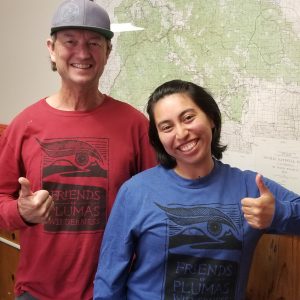
Become part of the movement to protect the Northern Sierra and give back to this place we all love so much! Friends of PlumasWilderness is launching a campaign inviting YOU to become a Wild Friend!
You can join our diverse Mixed Conifer Forest team through dollars or hours. There are a range of levels and great incentives, like our super-cool t-shirts with the FoPW logo! Donating monthly through PayPal is a great way to join the team, or we welcome your one-time donation. All donations are tax-deductible. Direct deposit from your bank to our account at Plumas Bank is also possible! Contact Darla at dderuiter1609@gmail.com for more info or to join us!